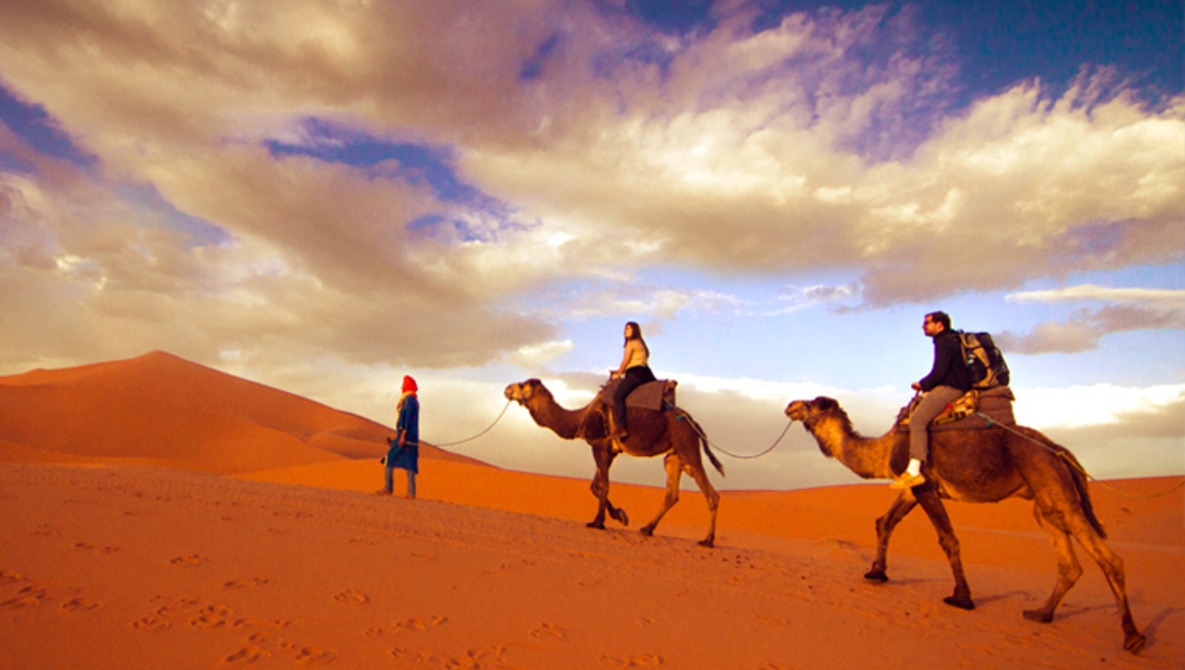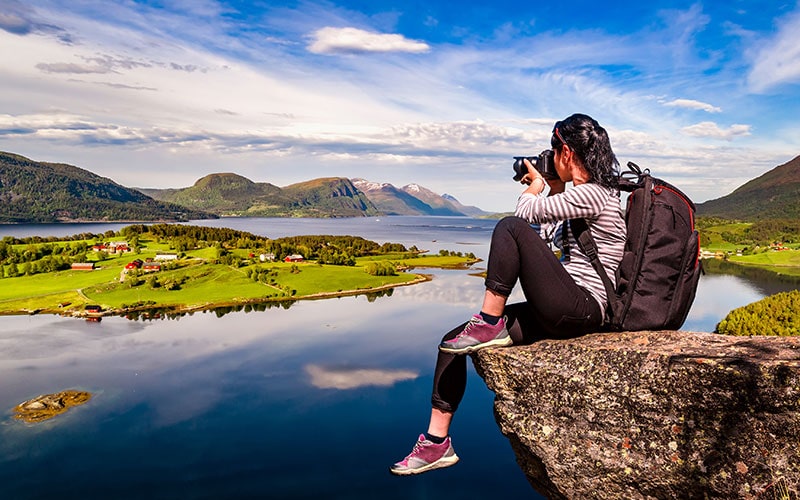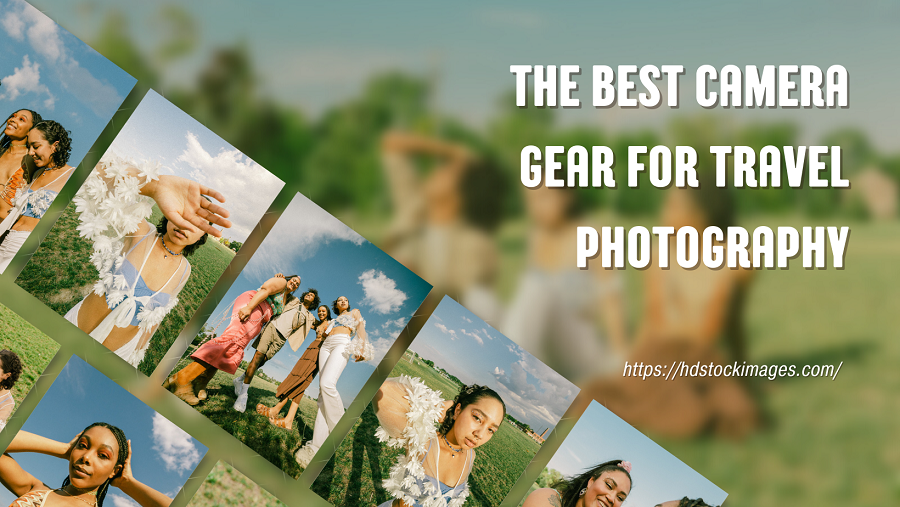Travel photography is a wonderful way to capture your adventures and experiences in a visual format. To ensure that your travel
photos are of the
highest quality, it's important to have the right camera gear. With so many options available, it can be challenging to know where to begin. In this topic, we'll explore some of the
best camera gear for travel
photography.From
camera bodies and lenses to tripods,
memory cards, filters, camera bags, batteries, and chargers, we'll cover everything you need to know to
capture stunning images on your travels. Whether you're a professional
photographer or just starting, these tips will help you take your travel
photography to the next level.When it comes to travel
photography, having the right camera gear can make all the difference. Here are some recommendations for the best camera gear for travel
photography:
A
camera body refers to the main component of a digital
camera that houses the
image sensor, the processor, and other important components. It is the foundation upon which other camera components such as lenses and accessories are attached.The camera body typically contains the camera's control buttons, dials, and other user interfaces, such as the LCD screen, viewfinder, and mode dial. It is also where the camera's battery, memory card, and other connectivity options such as USB, HDMI, and Wi-Fi are located.The camera body is available in different sizes, shapes, and types to suit different photography needs, including mirrorless cameras, DSLRs, point-and-shoot cameras, and medium-format cameras. Choosing the right
camera body depends on the type of
photography you want to do, your budget, and your skill level.
Lenses are optical devices that focus light and are used in cameras to capture
images. A
camera lens is made up of several glass elements arranged in a specific way to bend and focus light onto the camera's
image sensor or film.Different lenses have different focal lengths, which determine their angle of view and magnification. Shorter focal lengths have a wider angle of view, while longer focal lengths have a narrower angle of view and higher magnification. Lenses also have different apertures, which control the amount of light entering the
camera and affect depth of field.There are many types of lenses available, including:
- Standard Lenses: These are lenses with a focal length similar to the human eye, typically around 50mm.
- Wide-Angle Lenses: These lenses have a shorter focal length than standard lenses and have a wider field of view, making them ideal for landscape and architectural photography.
- Telephoto Lenses: These lenses have a longer focal length than standard lenses and offer a narrow field of view and high magnification, making them suitable for sports and wildlife photography.
- Zoom Lenses: These lenses have a variable focal length, allowing photographers to adjust the angle of view without changing lenses.
- Macro Lenses: These lenses are designed for close-up photography and allow photographers to focus on subjects at a very short distance.
- Prime Lenses: These lenses have a fixed focal length and are known for their sharpness and wide apertures, making them great for low-light photography.
Choosing the right lens depends on your
photography needs and the type of camera you have. It's essential to understand the different types of lenses and their capabilities to make informed decisions when purchasing lenses.
A tripod is a three-legged stand or support structure used to hold or stabilize a camera, telescope, or other equipment. It is typically made of metal or lightweight materials like carbon fiber and is designed to be adjustable so that the height and angle of the supported equipment can be easily changed.Tripods are commonly used in photography, videography, and astronomy to help steady the camera or telescope and prevent shaky or blurred
images. They are also used in construction and surveying to hold measuring instruments steady.
Memory cards are small, portable storage devices that are used to store digital data such as photos, videos, music, and other files. They are commonly used in devices such as digital cameras, smartphones, tablets, and other electronic devices that require portable storage.Memory cards come in various types, sizes, and formats. The most common types of memory cards are Secure Digital (SD), microSD, CompactFlash (CF), Memory Stick, and MultiMediaCard (MMC). Each type of memory card has its own specifications, capacity, and speed class.SD cards are the most popular type of memory card, and they are available in different sizes such as SD, miniSD, and microSD. They are commonly used in cameras, camcorders, and smartphones. CF cards are larger in size and are used in high-end cameras and professional photography equipment.Memory cards are available in different storage capacities, ranging from a few hundred megabytes to several terabytes. The storage capacity of a memory card determines how much data it can hold.Speed class is another important factor to consider when choosing a memory card. The speed class of a memory card indicates how fast it can read and write data. The higher the speed class, the faster the memory card can transfer data.Overall, memory cards are an essential tool for storing and transferring digital data. They are compact, portable, and convenient to use, making them an ideal choice for people who need to store and transfer large amounts of data on the go.

Filters are tools used to modify or enhance the appearance of an image or video. They work by selectively adjusting certain characteristics of the media, such as color, contrast, saturation, and sharpness. Filters can be applied to both still images and video, and are commonly used in photography, videography, and graphic design.Some popular types of filters include:
- Color filters: These filters add or subtract colors from an image or video, allowing for adjustments to the overall color balance.
- Contrast filters: These filters adjust the difference between the lightest and darkest areas of an image or video, resulting in a more pronounced or subdued contrast.
- Saturation filters: These filters adjust the intensity of the colors in an image or video, making them more or less vivid.
- Sharpening filters: These filters increase the apparent sharpness of an image or video by enhancing the contrast between adjacent pixels.
- Blurring filters: These filters reduce the level of detail in an image or video by smoothing out the edges and reducing the contrast between adjacent pixels.
- Distortion filters: These filters warp or distort an image or video, creating effects such as fisheye or lens distortion.
Filters can be applied manually in
image or video editing software, or can be applied automatically by cameras or smartphones with built-in filters.
A camera bag is a specially designed bag used to carry and protect camera equipment. Camera bags come in various shapes and sizes, and they are made to accommodate different types of cameras, lenses, and accessories.Some common types of camera bags include:
- Shoulder bags: These are the most common type of camera bag and are designed to be carried over the shoulder. They usually have multiple compartments for storing different camera gear and accessories.
- Backpacks: These camera bags are designed to be worn like a backpack and distribute the weight evenly across the back. They are ideal for carrying larger camera setups and accessories for longer periods of time.
- Sling bags: These are similar to shoulder bags but are worn diagonally across the body. They offer quick access to camera gear without having to remove the bag.
- Rolling bags: These camera bags come with wheels and a retractable handle, making them easy to transport over longer distances. They are ideal for photographers who need to carry a lot of equipment.
When choosing a camera bag, it's important to consider the type and amount of equipment you need to carry, as well as your personal preferences for style and comfort. Some camera bags are also weather-resistant or waterproof, which can be useful for outdoor photography or travel.
Batteries and chargers are essential accessories for any electronic device that requires battery power. This includes cameras, smartphones, laptops, and many other types of electronics.Batteries are used to store electrical energy and provide power to the device when it's not connected to an external power source. Most modern batteries are rechargeable, which means they can be used multiple times before they need to be replaced.Chargers are used to recharge batteries and provide power to the device while it's being used. There are different types of chargers available, including wall chargers, car chargers, and portable chargers.When choosing batteries and chargers for your electronic device, it's important to consider the following:
- Battery type: Different devices require different types of batteries, such as lithium-ion, nickel-cadmium, or nickel-metal hydride.
- Battery capacity: This refers to the amount of electrical energy the battery can store, measured in milliampere-hours (mAh). A higher capacity battery will last longer than a lower capacity battery.
- Charger compatibility: Make sure the charger you choose is compatible with the type of battery used by your device. Some chargers are designed to work with multiple battery types, while others are specific to certain types of batteries.
- Charging speed: Some chargers can charge batteries faster than others, so consider the charging speed when choosing a charger.
- Safety features: Look for chargers with safety features such as overcharge protection and short circuit protection to prevent damage to your battery and device.
Overall, choosing high-quality batteries and chargers can help ensure the long-term performance and reliability of your electronic devices.Overall, the best camera gear for travel photography is versatile, portable, and reliable. With the right equipment, you can capture stunning
images of your adventures and create lasting memories.
FAQ
Sure, here are some frequently asked questions about the best camera gear for travel photography:
What kind of camera is best for travel photography?A mirrorless or DSLR camera with interchangeable lenses is ideal for travel photography. Look for models that are compact, lightweight, and easy to use.
What lenses are best for travel photography?A versatile lens such as a 24-70mm or 18-105mm is a great all-around option for travel photography. For more specific needs, a wide-angle lens can capture sweeping landscapes while a telephoto lens can capture distant details.
Do I need a tripod for travel photography?A lightweight, portable tripod can be very useful for travel photography. It can help you capture sharp, stable images in low-light conditions or long exposures.
How many memory cards should I bring for travel photography?It's always a good idea to bring extra memory cards to avoid running out of storage space during your travels. The number of cards you need will depend on the length of your trip and how many photos you plan to take.
What filters are useful for travel photography?Neutral density filters can help you control the amount of light entering your camera, allowing for longer exposures and creative effects. Polarizing filters can enhance colors and reduce glare, particularly useful for outdoor and landscape photography.
What should I look for in a camera bag for travel photography?Look for a camera bag with padded compartments that can protect your gear while you're on the go. The bag should be lightweight, waterproof, and easy to carry.
How many batteries should I bring for travel photography?It's always a good idea to bring extra camera batteries and a charger to ensure that you can keep your camera powered up and ready to go at all times. The number of batteries you need will depend on the length of your trip and how frequently you plan to use your camera.
Conclusion
In conclusion, having the right camera gear can make a huge difference when it comes to travel photography. From camera bodies and lenses to tripods, memory cards, filters, camera bags, batteries, and chargers, there are a lot of factors to consider when choosing your equipment. By selecting versatile, portable, and reliable gear, you can capture stunning images of your travels and create lasting memories. Whether you're a seasoned professional or just starting out, the tips and recommendations in this topic can help you take your travel photography to the next level. So, grab your gear and start exploring the world through your lens!



 admin
admin








